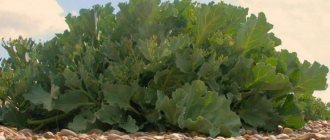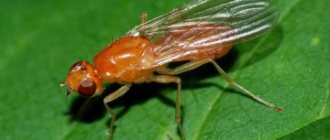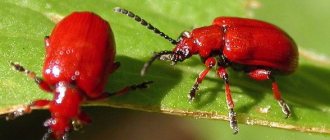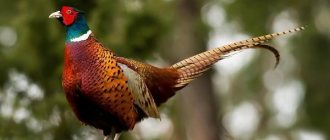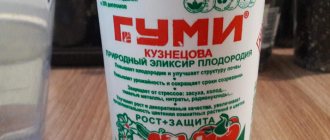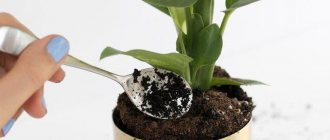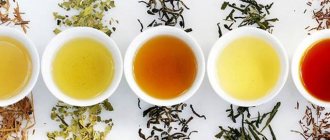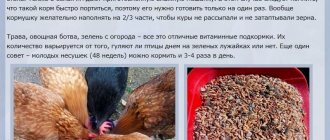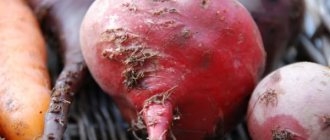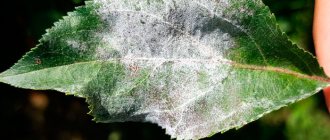Category: Mineral fertilizers Reading time: 6 min · Views: 13,061
Complex mineral fertilizers enrich the soil with micronutrients necessary for plants. The universal fertilizer Diammofoska contains important substances - potassium, phosphorus and nitrogen. How to use this composition, in what proportions? Let's consider the topic in detail.
Short description
Diammofoska is one of the best complex fertilizers
Diammofoska is a complex mineral fertilizer that contains nitrogen, phosphorus and potassium. The drug is available in two forms: 9:25:25 and 10:26:26, where the numbers indicate the percentage of the above components, respectively. The rest of the fertilizer consists of the following microelements:
- sulfur;
- iron;
- calcium;
- magnesium;
- zinc.
The drug is available in the form of pinkish granules and has a neutral acidity level, so the soil pH does not subsequently change. The fertilizer is universal and can be used on any category of soil, especially on those that are rich in nitrogen and lack potassium and phosphorus. Diammophoska is usually used in the spring, but summer and autumn fertilizing is often allowed.
We also recommend reading the article “Heteroauxin for plants: use of a root growth stimulator, methods of use, how to dissolve.”
What it is?
Diammofoska , or Diammonium Phosphate , is a universal fertilizer based on the NPK complex. A balanced composition of 10-13: 23: 23 (nitrogen, phosphorus, potassium) is vital for full growth, flowering, ovary formation and ripening of main agricultural crops.
Chemically neutral mineral fertilizer. The physiological indicator of acidity is pH-7.
It is obtained through neutralization of phosphoric acid, diammonization (treatment with ammonium salts) and the addition of potassium compounds.
Available in the form of small (up to 6 mm) granules of a reddish or pink hue. Does not cause caking (hygroscopicity is low), does not absorb moisture even during long-term storage. Retains 100% friability. Thanks to treatment with an anti-dust reagent, the fertilizer does not generate dust.
Fertilizer composition
The main active composition of Diammonium Phosphate includes:
- from 10-13% nitrogen - the element is presented in ammonium form; responsible for the formation and development of the aerial part;
- 23-26% phosphorus is a necessary component for the development and strengthening of the root system (especially in the early stages of growth); responsible for energy metabolism (respiration, photosynthesis, oxidation of organic substances;
- from 23-26% potassium – a stabilizing component of the soil structure, an element of carbohydrate synthesis and plant development at the cellular level;
- no more than 1-1.5% water.
Attention! The supply of nitrogen in the soil is replenished naturally due to soil microorganisms and the symbiosis of nodule bacteria. There is no such source in nature to replenish phosphorus and potassium. NPK complexes are necessary for a balanced diet.
Additional microelements ingredients:
- sulfur – resists fungal infections and diseases (powdery mildew, tuber scab). Protects against pests (aphids, mites, wireworms);
- magnesium is a “mineral of life”, a participant in photosynthesis and protein production;
- calcium – is responsible for soil fertility, activates the activity of soil microorganisms, and is a nutritional stimulant;
- copper is a component of oxidative enzymes, participates in photosynthesis, carbohydrate and protein metabolism; especially important on peat bogs and light soils; resists diseases of cereals;
- zinc – optimizes growth and metabolic processes; influences the development of internodes, leaf blades, and forms full-fledged rosettes; with a lack of zinc, fruit trees (especially apple trees) are susceptible to infection with dry tops; the element is useful for corn, cotton, potatoes and legumes;
- iron is an assimilable microelement that participates in the redox reactions of mitochondria and chloroplasts;
- silicon – provides resistance to daily temperature fluctuations, increases cold resistance, protects against drought; compacts the walls of plant cells, resists diseases and bacterial infections;
- boron - stimulates protein and nucleic acid metabolism, prevents dry rot, rotting of the root and core of tubers.
Action of components
Nitrogen is needed by cultivated plants for the growth of vegetative mass and the formation of flower buds. Its deficiency causes premature yellowing and falling of leaves, and a decrease in the intensity of crop development. They experience a special need for nitrogen in the initial growing phases, when entering the period of full growth.
Among the components of diammophoska there are no nitrates that can accumulate in the soil and crops. Nitrogen is contained in the preparation in ammonium form (this is why the alternative name for diammophoska is diammonium phosphate), which is easily absorbed by crops. This form reduces the loss of nitrogen due to moisture, strong wind and evaporation.
Phosphorus influences the formation of plant cells, participates in metabolic processes, and promotes cell reproduction and respiration. When it is deficient, the foliage of the cultivated plant becomes deformed and acquires a purple color.
In the composition of diammophoska, phosphorus is in the form of P2O5 oxides. When the fertilizer comes into contact with the soil, phosphates break down faster and become available to plants. This circumstance allows the drug to be used at any time of the year, in contrast to pure phosphorus, which penetrates the soil less well and is therefore applied only in the autumn.
Potassium is involved in the delivery of nutrients and elements to the root system of plants. This allows not only to improve the general condition of plants, but also to increase their resistance to abiotic and biotic environmental factors.
This drug is present in significant quantities in the composition of diammofoska, as a result of which some of the substances of the sulfo group and potassium ions can accumulate in the soil. The result of this is an increase in soil acidity.
Application rates of diammophos per 1 m2
When using the drug, follow the dosages indicated on the package.
Application rates are usually universal for all types of soil:
- In the spring, before digging the area - 25 g per square meter. m.
- For fruit trees over 2 years old, 20 g is enough. Fertilizer is usually sprinkled around the trunk, slightly embedding the granules into the soil and pouring thoroughly.
- When planting strawberries, apply up to 7 g of fertilizer per meter of bed.
- For potatoes - 8 g per square meter. m.
- For greenhouse plants - 35 g per square meter. m.
In the absence of precipitation, the area sprinkled with Diammophos must be watered abundantly.
(+ / -) Advantages and disadvantages
The main positive properties of diammofoska, which determine its widespread use in agriculture, include:
- action immediately after application;
- Possibility of use on grains, legumes, fruits and vegetables;
- extending the shelf life of the resulting crop;
- low cost;
ALL the benefits of Diammofoska (click to expand)
- homogeneity of the composition, allowing for more even distribution of fertilizer across the site;
- increasing the yield and its quality, improving taste and marketability;
- ease of use;
- successful compatibility with organic fertilizers;
- Possibility of use on various types of soil;
- relative safety for humans and the environment;
- absence of harmful and undesirable impurities.
Diammofosk also has a number of disadvantages, the most significant of which include:
- the need for mandatory compliance with application standards;
- inorganic origin;
- the presence of certain storage rules.
Application of ammonium hydrogen phosphate for plants
The use of Diammophos is justified for all types of cultivated plants that do not tolerate chlorine well. Vegetables, berry bushes, and herbs are very responsive to fertilizer.
The drug is used both for treating large areas (in fields) and for growing cultivated plants in small garden plots.
Diammophos gives the best results on nitrogen-rich lands. Or in combination with organic fertilizers. This is especially true in regions with prolonged rain. Thanks to the right combination of organics and minerals, there is no leaching of useful elements from the soil. Therefore, plants grow well without experiencing nutritional deficiency.
Diammophos helps increase the yield of all crops. The quality of the harvest and the germination of grown seeds improves. Along with this, the immunity of plants increases, making it easier for them to withstand adverse environmental factors.
Agriculture
Diammophos is recommended to be applied in spring or autumn. After the snow melts, the drug is evenly scattered over the area before planting. The optimal dosage for applying fertilizer is a large spoon per meter. This is usually done before spring digging. In the absence of precipitation, watering is recommended so that the active substances dissolve and give all the nutrition to the soil. In addition, watering is recommended to prevent burns to the root system of seedlings.
The drug revives weak, diseased trees and shrubs that grow slowly and experience severe nutritional deficiencies.
Berry crops are especially responsive to its application: gooseberries, raspberries and currants. A couple of large spoons per square meter is enough. m. The same dosage is applicable for vegetable crops.
Diammophos is also used to fertilize indoor plants and garden flowers. Thanks to intensive nutrition, they grow faster and set buds.
Industry
Ammonium hydrogen phosphate is found not only in agriculture. Also used for industrial purposes:
- As a food additive for livestock (in the form of preservative E-342). The maximum dosage for consumption of this substance is 70 mg per 1000 g of weight per day. The preservative is approved for use in most developed countries of the world.
In addition, they are used in the manufacture of dairy products, bakery products, canned meat and fish, refreshing drinks, and dietary supplements. The drug regulates the acidity level of food and improves the properties of products.
- Food grade diammonium phosphate is a means of producing alloys of certain metals. Among them are zinc and bronze, copper and tin.
- The drug is used to treat some materials that are sensitive to elevated temperatures. It has fire retardant properties and is used in the production of textiles and paper products.
- In the pharmaceutical industry to prevent caking and the appearance of lumps.
- In the technical field, in particular, in the production of devices using the characteristics of ferroelectrics and piezoelectrics.
See also
Instructions for using the drug Colorado against the Colorado potato beetleRead
Using fertilizer in the garden
Diammofosk is used either when digging up a plot in the spring, or during irrigation of plants during the growing season. When used dry, it is recommended to pre-moisten the soil to quickly dissolve the granules.
During irrigation, fertilizers are diluted in water. Dosage varies depending on the specific crop. A common element for all plants is the application of diammofoska directly under the root in the evening or morning. It is necessary to try to avoid contact of the drug with foliage, which will cause the plant to burn.
How to use diammophos correctly?
There are no particular difficulties in using this fertilizer. The main thing is to carefully study the instructions and follow them.
Manufacturers recommend moistening the soil before applying fertilizer for a faster effect.
Preparation of working solution
The drug is not only applied to the soil in dry form. A liquid fertilizer is prepared from it. Preparation: 40 grams of fertilizer granules are dissolved in a bucket of water.
Plants are fed with this solution in the spring. For one bush of crop you need to use 1 liter of this solution.
Scheme and rules for processing potato bushes
When feeding potatoes, growth noticeably improves and productivity increases due to the complete absorption of this fertilizer by the plant. The shelf life of root vegetables even increases.
There are several application methods for potatoes:
- Before spring plowing, fertilizer is scattered on the surface of the earth at the rate of 25 kilograms per 1 sq.m.
- Immediately before planting, the area intended for potatoes is sprinkled with the preparation at the rate of 20 grams per 1 square meter, followed by harrowing into the soil.
- When planting seedlings, 6 grams of granules are poured into each hole.
See also
Types and instructions for use of superphosphate fertilizer, composition and processing rules
Read
All three options give good results.
Solanaceous crops
Peppers, tomatoes and eggplants have a serious need for diammofoska due to its ability to strengthen the aboveground part and root system of crops and improve the quality of fruits. Depending on the method of use, the dosage of fertilizer varies:
| Method of application | Dosage |
| Digging up a plot in the spring | 50 g diammophoska/m2 area |
| Watering during the growing season | 10 g fertilizer per 10 liters of water |
When digging up soil in greenhouses and greenhouses, the amount of fertilizer applied is reduced to 30 g. When planting seedlings in a planting hole, an additional 5 g of diammofoska is added.
When watering, it is recommended, if possible, to supplement the fertilizer solution with 0.5 kg of semi-rotted manure. During the growing season, two such treatments are sufficient.
Application for greenhouse plants
Greenhouse tomatoes need a little more nutrients - approximately 5 - 6 g for each bush .
Foliar feeding every 2 weeks is also recommended.
Cucumbers that are grown indoors, especially together with tomatoes, can reduce their yield because they require high humidity, and tomatoes, on the contrary, require dry air and ventilation.
The yields of cucumbers and tomatoes can be partially stabilized with the help of diammonium phosphate, which will protect the tomatoes from fungal diseases that appear in a humid environment.
At the same time, cucumbers will be able to tolerate lower humidity and a decrease in the amount of liquid when watering. As a result of complex feeding and the creation of average conditions for plants with such opposite needs, they will all be happy.
Video: Facts about using fertilizer
Potato
Thanks to the timely application of diammofoska, the yield and storage duration of tubers increases, and the appearance of the crop improves. In this case, diammofoska is applied as follows:
| Method of application | Dosage |
| Digging up the area before planting | 20 g diammophoska/m2 area |
| Application directly into the planting hole | 5 g of fertilizer in each hole |
Order of use. Soil application rates
Instructions for using diammophoska are presented in the table below.
| Terms of Use | Consumption, g/m2 |
| For digging in autumn or spring | 20-30 |
| In greenhouses | 40 |
| Under berry bushes and young fruit trees | 30 |
| In the vineyards (before the snow melts) | 25 |
| In flower beds under perennials | 25 |
For indoor flowers, a solution of 1–2 g per 1 liter of water is suitable. Frequency of use: twice a month.
All applications are made with subsequent watering.
Potato
The use of diammofoska for this crop is especially advisable, since potatoes grown using the drug have improved taste and commercial quality.
On private farms, you can scatter granules before planting at a rate of 20 g per 1 m2 with digging.
During planting, diammofoska for potatoes is applied directly into the holes, 5 g into each hole.
The granules should not be allowed to touch the planting tubers, otherwise they may be burned. The fertilizer must be thoroughly mixed with the soil.
Tomatoes
For tomatoes, the drug is applied in similar ways: for digging in the fall or spring into the holes: 4 g per hole in the open ground and 6 g in the greenhouse. It is effective to combine the drug with organic substances. You can add manure before winter, and humus in the spring. The ash will enrich the substrate with potassium and reduce the acidity of the soil.
Cabbage
Diammofoska is applied to the holes when planting potatoes.
This crop, like most plants of the Cruciferous family, react negatively to chlorine, which is usually present in potash fertilizers. Diammofoska allows you to completely provide cabbage with potassium without the use of a harmful element.
This fertilizer promotes improved head setting. After processing, cabbage increases resistance to diseases and slugs.
During the spring digging of areas under cabbage, 25 grams of diammofoska are added per square meter. When planting seedlings in open ground, an additional 5 grams of fertilizer is added to the seed holes.
Composition and benefits of fertilizer
Diammofoska is a fertilizer containing a complex of useful substances. Its main components are nitrogen, phosphorus and potassium. Potassium and phosphorus components are present in the highest concentrations.
The fertilizer has the form of pink granules and has neutral acidity. Diammofoska also contains sulfur, magnesium, iron, zinc, and calcium. These microelements are present in the granules in equal quantities.
Important! Diammofska is produced in two forms: 10:26:26 and 9:25:25. The numbers indicate the percentage of nitrogen, phosphorus and potassium in the fertilizer.
The fertilizer is universal and suitable for use on any type of soil. The main application period is spring, but fertilizing is carried out in summer and autumn.
The substance is effective on soils rich in nitrogen: peat bogs, plowed areas, areas with high humidity. The use of diammofosk fertilizer is possible on soils poor in phosphorus and potassium.
Nitrogen stimulates the growth of green mass and the formation of flower buds. If there is a lack of microelement, the leaves turn yellow and fall off, and plant development slows down. Nitrogen is especially important in the early stages when plantings enter a period of active growth.
Diammofosk does not contain nitrates that can accumulate in soil and plants. Nitrogen is present in the fertilizer in the form of ammonium. This form reduces the loss of nitrogen due to evaporation, exposure to moisture and wind. Most of the substance is absorbed by plants.
Phosphorus promotes the formation of plant cells, participates in metabolism, reproduction and respiration of cells. Its deficiency leads to the appearance of purple color and deformed leaves.
Phosphorus in diammofoske is present as oxides, which are well absorbed by garden crops and stored in the soil. The amount of phosphorus in the fertilizer is about 20%. In its pure form, the microelement slowly penetrates the soil, so it is often applied in the fall.
When diammophoska comes into contact with the ground, phosphates break down and spread much faster. Therefore, fertilizer is used at any time during the season.
Potassium ensures the transport of nutrients to plant roots. As a result, crop resistance to diseases and adverse weather conditions increases. With a lack of microelement, the leaves turn pale, dry out, and become covered with spots.
Tomatoes
Diammofoska has a positive effect on the yield of tomatoes.
Tomatoes react positively to the application of diammofoska. A special effect is achieved by adding fertilizer to the soil during autumn cultivation. In the spring, 4 grams of the drug are applied to each seedling bush. After another two weeks, the procedure is repeated, especially if there are signs of nitrogen starvation.
What to combine with Diammofoska for tomatoes for strengthening (click to expand)
Diammofosk on tomatoes goes well with the simultaneous application of organic fertilizers such as:
- compost → cooking recipe;
- manure;
- ash → how to apply fertilizer.
What is the advantage of diammophoska?
- Thanks to the granulation of particles, the complex is distributed evenly, so the effect is visible in practice in a measured manner.
- A universal product used on any type of soil and for any crops.
- Using this product, the shelf life of fruits is doubled. Potatoes will be stored until next year.
- A solution with diammonium phosphate improves any type of soil, both sandy and loamy (and others).
- Can be used at any time of the year due to its lightning-fast effect.
- May be used as additives.
- The price is available to all versts of the population. The price of fertilizer fluctuates around 20 thousand rubles per ton.
- Does not affect the harvest in any way. Does not accumulate nitrates or nitrates in any way.
- Very easy to use. Application is possible in packaged dry form and in solution.
Important! To achieve a quick effect after adding the drug to the soil, it needs to be moistened.
In order for the result to be always visible, the complex should be added both in spring and autumn. Can also be combined with organic fertilizers such as chicken manure or manure. In this case, diammofoska is added in the spring, and organic fertilizers are used in the fall.
Strawberries
This culture responds positively to the application of diammofoska. This is reflected in increased productivity. The bushes become more powerful, and their resistance to the negative effects of biotic and abiotic environmental factors increases.
15 g of fertilizer is applied per 1 m2 while loosening the soil in the spring. Diammofoska in the solution is added again during the period of tying the ovaries. To do this, dissolve 15-20 grams of the drug in a liter container of water and add the solution under each bush, after loosening the soil.
Advantages
One of the most important advantages of fertilizer is the balance of its composition in each granule. Any volume of it will contain a certain, specified amount of ingredients.
- This is a universal fertilizer, suitable for any soil and different plants, and has a wide range of effects on them.
- Increases the productivity of garden plants, improves the quality of their fruits and seeds, makes them resistant to drought and disease.
- Increases shelf life and preservation of fruits, especially good for potatoes.
- It is not a particularly harmful chemical and does not accumulate in fruits and roots.
Diammofosk is a fast-acting chemical fertilizer. This is explained by the fact that nitrogen takes the form of ammonium. The oxygen content breaks down phosphorus, allowing it to quickly be absorbed and distributed in the soil.
Winter grains
Wheat, barley, oats, rye, sown before winter, require additional provision of a complex of mineral fertilizers. The best option in this situation is to use diammophoska.
Fertilizer is applied in a belt method to a depth of about 10 cm before planting. Such deep deepening is due to the need to deliver fertilizer closer to the roots. There should be about 8 centners of diammophoska per 1 hectare of area. Its action in this case will begin in the spring, after the snow melts and the soil warms up. During this period, grains experience a particularly severe lack of nutrients.
Fruit crops and indoor plants
Diammofoska can significantly improve the taste of apples, pears, plums, cherries, etc. This applies even to late-ripening varieties with hard skin.
When digging up an area for fruit trees, 20 g of the drug is applied to each square meter of area. To feed pome crops (apple, pear, quince), diammofoska is applied at the rate of 30 g/m2; for stone fruits (cherry, plum, cherry plum, sweet cherry, apricot), the dosage is reduced to 20 g/m2. On berry crops, in the first two years of life, 10 g/m2 of the drug is applied to each bush, and for plants in the third year of life, the normal dosage is 15-20 g/m2. 25 g/m2 of diammophoska is added to the grapes.
Important! When feeding grapes, it is allowed to apply this preparation to the bush sector directly into the unmelted snow.
For flowers in a room, 2 grams of fertilizer diluted in a liter of water is enough. Irrigation is repeated once every two weeks.
Mode of application
As mentioned above, this type of fertilizer can be used for complementary feeding of any crops.
You may be interested in: Treatment of strawberries with copper sulfate in spring Hydrohumate and peat oxidate: instructions for use for cucumbers Yeast fertilizer for tomatoes - fertilizer recipe
Instructions for use of the drug. Dosage for different conditions:
- for protected ground – 40 grams per square meter (hereinafter m2);
- cultivated land – 20g/m2;
- soil for digging – 20g/m2;
- for berry bushes – 15g/m2;
- for shrubs that are more than 2 years old, the dose increases to 20-25 g/m2;
- trees 20-30g/m2;
- grapes - 30g/m2 in spring in still unmelted snow;
- for flowers during hilling and loosening the soil 20g/m2;
Lawn
Grass sown on lawns needs feeding throughout the growing season. The application of mineral fertilizers allows you to intensify the growth of grass.
In spring, diammofoska is scattered over the area in an amount of 300 grams per square meter. In the summer, the procedure is repeated in the original volume, and in the fall, it is recommended to reduce the dosage of fertilizer by half.
Tip No. 1 If it is impossible to use diammophoska in the spring, you can replace it with ammonium nitrate.
How to use diammophoska correctly
The amount of fertilizer is determined by the crop to which it will be applied. For vegetables, potatoes, flowers, fruit and berry plants, you need to add 1-1.5 tablespoons per 1 m2 of digging area. It is better to do this in spring in moist soil for better dissolution.
To feed the trees, 2 tablespoons of granules need to be buried 8cm into the soil. Place 1-2 tablespoons of granules under the bushes.
This agrochemical is used for application to any crops.
It is possible to add diammophoska to planting holes. To do this, distribute ½ teaspoon of the composition over the recess and pour the soil well.
Strawberries and ornamental shrubs are fertilized in the spring during digging and tillage. For cultivated land, about 20 g of complex fertilizer is added per square meter; for uncultivated soils, about 30 g will be required.
An important advantage of diammophoska compared to potassium fertilizers is the absence of chlorine in the composition.
This makes it possible to use it for feeding cabbage and other cruciferous crops. At the same time, the growth of green mass is enhanced, dense heads of cabbage are formed without cracking.
It is not advisable to prepare a nutrient solution from diammophoska; the phosphorus contained in it is poorly soluble. Therefore, it is better to use a dry composition and constantly keep the soil moist. It will be gradually absorbed by plants, which will receive constant nutrition.
Using fertilizer in places where the soil is not sufficiently moistened, it is applied to the digging depth. On wet lands, the composition is scattered over its surface and leveled with a rake.
The drug is good for feeding indoor plants. Take 2 g of the substance and dissolve it in a liter of water. We water the flowers with this solution at intervals of 15 days.
For potatoes and other vegetables, as well as for strawberries and ornamental crops, the main application of fertilizer is made at the time of spring digging
We fertilize the lawn with this mixture. In the spring we scatter it over the entire surface at the rate of 4 kg per 10 m2. In summer, repeat fertilizing at the rate of 4 kg per 100 m2. Autumn fertilizing will be 2 kg per hundred square meters, since the lawn does not need nitrogen in the fall; a composition with a lower content is used.
When adding diammophoska to the soil, there is no need to add other mineral fertilizers. A good effect is achieved when combined with organic fertilizers, chicken manure or mullein.
Precautionary measures
It is important to store Diammofoska in appropriate containers.
Diammofoska belongs to the third hazard class and, if stored and used correctly, does not pose a serious danger to human and animal health. When storing this fertilizer, the following conditions must be ensured:
- temperature within 0…+30С;
- lack of nearby food, animal feed, medicines;
- sufficient ventilation in the room;
- protection from direct sun rays;
- storage in special containers;
- humidity no more than 50%.
Working with fertilizer requires special care.
Despite the explosion and fire safety of diammofoska, it is not recommended to store it near heating devices and sources of open fire. Wooden or cardboard containers, which are highly flammable, are not suitable for storing the drug.
Diammofoska must be kept in a place that is inaccessible to pets and children. The shelf life of the fertilizer is about 5 years; upon completion, the drug must be disposed of in accordance with the established procedure.
When working directly with diammophoska, it is necessary to use a respirator, goggles and rubber gloves. If possible, it is recommended to wear a special protective suit. After completing the work, wash your hands and face thoroughly under running water.
Direct contact of the fertilizer with the mucous membrane or skin should not be allowed. If contact occurs, wash this area of the body with soap and water.
In case of poisoning with diammofoska or the presence of allergic reactions, it is necessary to urgently call an ambulance. You can rinse your mouth and throat yourself, after which you need to try to provoke a gag reflex, but the help of a qualified specialist is still necessary.
Storage conditions
Basic requirements for storage conditions:
- closed room;
- optimal ventilation;
- storage in packages on wooden pallets;
- optimal storage temperature – 0 – 30 degrees;
- lack of humidity;
- Shelf life is six months from the date of production.
The fertilizer must not be stored with food, livestock or poultry feed.
After using the fertilizer, the container must be disposed of.
Analysis of varieties of diammophoska
The following varieties are allowed for use in Russia:
- Diammofosk grade A;
- Diammofosk grade B;
- nitrogen-phosphorus-potassium fertilizer brand NPK-1.
There is practically no difference between them in efficiency, cost or availability to the buyer, however, there are minor differences in the content of the main components:
| Name | Nitrogen, % | Phosphorus, % | Potassium, % |
| Diammofosk grade A; | 10 | 26 | 26 |
| Diammofosk grade B; | 9-10 | 25-26 | 25-26 |
| Nitrogen-phosphorus-potassium fertilizer brand NPK-1 | 10 | 26 | 26 |
Description and characteristics
Mineral fertilizer is produced in the form of granules with neutral acidity, which contain a balanced ratio of all useful elements. After application to the soil, it begins to act almost immediately. If you are interested in the question: what color are the granules, then we can say that they are pink or red.
Complex fertilizer is produced in two main forms, each of which differs in the percentage of nitrogen-phosphorus-potassium components. Suitable for use on any soil, especially depleted soil.
(!) Errors when entering
After the formation of ovaries on nightshades, they sometimes continue to feed with diammophos. This cannot be done, since nitrogen will cause excessive growth of the vegetative mass to the detriment of the harvest.
You should also not exceed the recommended dosage of fertilizer for any crop. This will cause an excess of one or another nutrient element, as a result of which the plant will be depressed and will not produce the expected harvest.
We also recommend reading the article “Ammonium nitrate (ammonium nitrate): how to dilute and apply for plant nutrition, characteristics, brands, properties, explosion hazard.”
The benefits and harms of the drug for plants
The drug only benefits the plant without causing harm. But it has some minor disadvantages.
| pros | Minuses |
| The speed of action of the drug. Starts working immediately after application. | Chemical composition of fertilizer. |
| Suitable for all crops. | Strict use of the standard recommended by the manufacturer. |
| Gives good results on all types of soils. | Compliance with storage rules. |
| Contains no harmful components. | |
| Improves the quality and keeping quality of the harvested crop. | |
| Easy to use. | |
| Combines well when used together with organic matter. |
The drug works well not only on the underground part of the plant, but also on the above-ground part.
Opinions about diammophoska
Summer residents and gardeners usually leave positive reviews about the use of diammofoska:
“The general impression is a good complex fertilizer”
Hanaliya,
Russia, Saint-Petersburg
Their conclusions are confirmed by numerous scientific studies ⇓
“...with the same supply of soil with mobile phosphorus and exchangeable potassium, but with an increase in the dose of diammofoska, the barley yield increases by 14%.”
Yu.A. Akmanaeva,
Candidate of Agricultural Sciences, Associate Professor, Perm State Agricultural Academy
